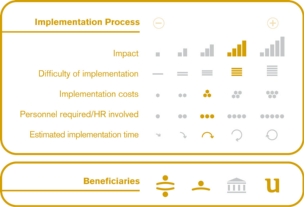6 - Financing
6.1 - Identifying new types of private R&D&i investors
Introduction
The tendency to use private capital to finance R&D&i business activities, something which is very common in Anglo-Saxon countries, offers interesting possibilities which are not available from public funding, which is the main source of financing for Companies in continental Europe. As such, private investors in Innovation, and the associations or groups they belong to, provide an important driving force for the generation of wealth in both the United Kingdom and the USA. They play a decisive role in the development stages of innovative business projects and in supporting researchers with the initiative to create new companies to commercialise their scientific and technical developments. In this respect, it is important to note that collaboration with Universities plays a crucial role in such projects by helping to convince investors about the viability of ideas.
There are several different types of private investors. The first differentiation we can make is based on the type of project or activity which they fund. When an investor supports well-established activities and companies it is referred to as private equity. Conversely, investments in projects in their early stages are referred to as risk or venture capital. Amongst venture capital investors, we can also distinguish three main categories, which are outlined below in terms of the amount of financing they provide:
- Business angels are individuals who provide capital, expertise and a personal network of contacts to a start-up, usually in exchange for shares, but avoid becoming directly involved in the day-to-day management of the company. They generally invest using their own resources, unlike other venture capitalists, who manage money owned by third parties through funds.
- Venture Capitalist Trusts supply funding but also become directly involved in the management of the company by providing skilled human resources.
- Venture Capitalists provide funding in exchange for a company’s shares and significant representation on its Board of Directors.
Examples
MIT Venture Capital & Private Equity Club (EE UU)
This is one of the larger and more visible campus organisations at the American academic institution. Its mission is to provide members with the opportunity to enhance their knowledge about the world of venture capital and private equity sources. It encourages interaction with leading professional investors and business executives, and the establishment of relationships with members of the MIT community who share similar interests. The club is managed and run by students and sponsors a wide range of activities including venture capital, private equity, entrepreneurial activities and the commercialisation of technology developed by the MIT. The club has established strong partnerships with numerous MIT organisations, as well as local businesses and the investment community, and has a proven track record of developing new projects with market launches.
Octopus Investments (United Kingdom)
A venture capitalist investment fund created in Oxfordshire, which manages the capital of large regional entrepreneurs who are interested in investing in new technology companies, most of which emanate from Oxford University.
Implementation process
Sources
- Interviews in Oxfordshire (United Kingdom) with Doctor Espejo, Programme Manager of the Innovation Growth Team; Dave Waller, from the County Council; and Joe Barclay, from the Oxfordshire Regional Liaison Office.
- http://www.mitvcpe.com/ - MIT Venture Capital & Private Equity.



